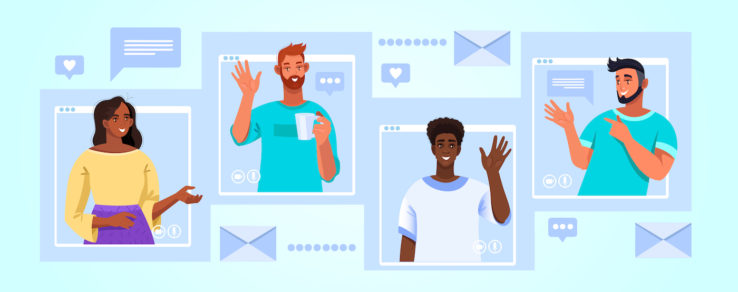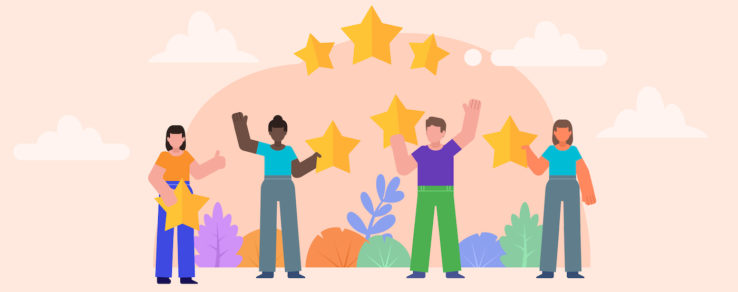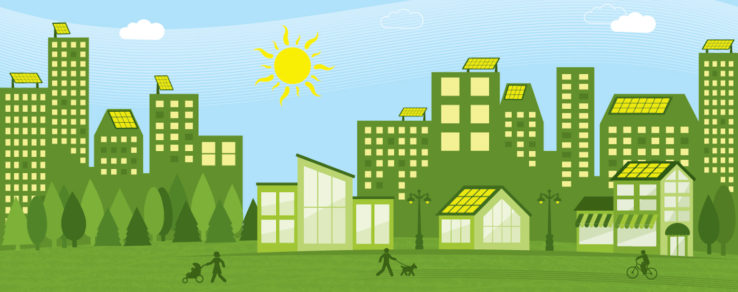Does your energy utility have an effective digital relationship with customers? The answer may surprise you. Most energy utilities email program promotions to customers, text them outage alerts and offer electronic billing options — creating the impression of a strong connection. However, these transactional tactics actually fall far short of a true digital customer relationship.
To effectively build engagement, energy utilities need to think beyond the monthly bill and generic notifications. A digital customer relationship requires consistent touchpoints, relevant content and messaging that responds to each customer’s specific interests.
What is a digital customer relationship?
A digital customer relationship means that an energy utility proactively uses two-way communication channels to connect with customers, listen to their needs and interests, and deliver targeted, personalized messages to build long-term engagement.
The “digital” part indicates how you reach customers — through email, text, web and social platforms. But the “relationship” in this equation is about much more than which channel you use. Customers expect a digital relationship to be responsive and relevant to their interests.
An energy utility can’t simply replace its old snail-mail outreach with email and consider that to be a digital relationship. Likewise, most digital marketing efforts do not constitute a digital relationship. Those are one-way channels — pushing messages or promotions that are only important to your energy utility, not your customers. An effective digital relationship is built on two-way communications: listening to customer needs and delivering messages that are important to them.
The Netflix secret to a successful digital customer relationship
You probably get at least one email from Netflix every week with movie recommendations you might enjoy or gentle reminders to finish watching a series you started. You might get one of these emails every day!
Are these emails simply marketing messages? After all, the objective is to get you to watch more Netflix so that you won’t cancel your subscription. Or, are these recommendations also a type of customer engagement, helping you get more enjoyment out of your free time by guiding you toward entertaining Netflix content?
Of course these messages can be both a type of marketing and effective customer engagement. The key is personalization. Netflix isn’t promoting the same program to all its customers; the streaming service is making a targeted recommendation, promoting specific content that it thinks you will find relevant and useful. That’s not just digital marketing, it’s a digital relationship.
Importantly, Netflix doesn’t just contact customers when a payment is due at the end of the month. Netflix doesn’t wait to reach out when its rates are going up or to provide restoration updates about streaming outages. Netflix connects with customers all the time, sometimes every day, to make sure customers are enjoying its service.
Does this strategy work? Well, Netflix has built a pretty successful business around its 200 million subscribers. Being part of customers’ daily lives, through continuous digital engagement, is a big part of that success. If you are a Netflix customer, you will be regularly reminded that great entertainment is only a click away.
How energy utilities can build an effective digital customer relationship
Energy utilities can borrow a page from the streaming service’s engagement playbook. Like Netflix, energy providers are a big part of customers’ daily lives, offering a service that’s increasingly valued in today’s connected world. But unlike Netflix, utilities too often fail to build meaningful digital relationships with their customers, instead relying on transactional outreach like monthly bills, outage alerts and generic program promotions.
The good news is, energy utilities can build strong customer relationships. It just takes a commitment to move beyond these typical one-way tactics to embrace the relevant messaging that customers now expect. Here are three key steps to building and maintaining digital customer relationships:
Effective digital engagement starts on day one
Companies that succeed at customer engagement don’t wait to get started. The last time you signed up for an online subscription or created a new account with an ecommerce company, how much time elapsed before you received the first welcome email? Minutes — or seconds? These messages make a great first impression and immediately start building a strong digital relationship.
Likewise, energy utilities can use welcome series emails to start their relationship with new customers (or restart a relationship with customers moving within a service territory). These welcome messages are an opportunity to introduce your utility, show customers how to make the most of their service, and get them started on paperless billing, outage alerts, eNewsletters and other digital touchpoints. And it works! Customers who receive welcome series open future emails from their utility at 30% higher rates than other customers.
Stay top-of-mind with regular touchpoints
Consistency is important in any relationship. Customers want to know that you’re there to support them on their schedule, not just when you’re trying to sell them something.
A monthly email newsletter is one way to maintain engagement on a regular cadence, delivering interesting content and helpful resources on a schedule that’s distinct from other transactional messages. This consistency pays dividends: Questline Digital performance metrics show that eNewsletter readers are much more likely to open other emails from their utility customers, clicking on program promotions at a 16% higher rate than other customers.
Speak to customer needs with relevant messages
Customers don’t just prefer to receive personalized messages — it’s a basic expectation, thanks to companies like Netflix that have set the standard for digital engagement. To meet these expectations, your utility needs to identify and deliver relevant messages, and avoid wasting customers’ time with communications they aren’t interested in.
Customer interests can be identified in a variety of ways: content consumption on your website or eNewsletters, program participation, marketplace purchases or customer personas built using all of these characteristics and more. With this information, you can deliver relevant content and promotional messages that speak to their interests and address their motivations. In one example from Questline Digital performance metrics, an energy utility that segmented its business newsletter by industry saw content engagement increase by 84% for some segments!
Consistent outreach builds strong relationships
A digital customer relationship is much more than digital marketing or one-way communication. To be effective, your energy utility should use two-way channels to listen to customers and consistently provide relevant, personalized messages that speak to their interests. The result will be stronger relationships and long-lasting satisfaction to rival companies that truly excel at digital engagement.



